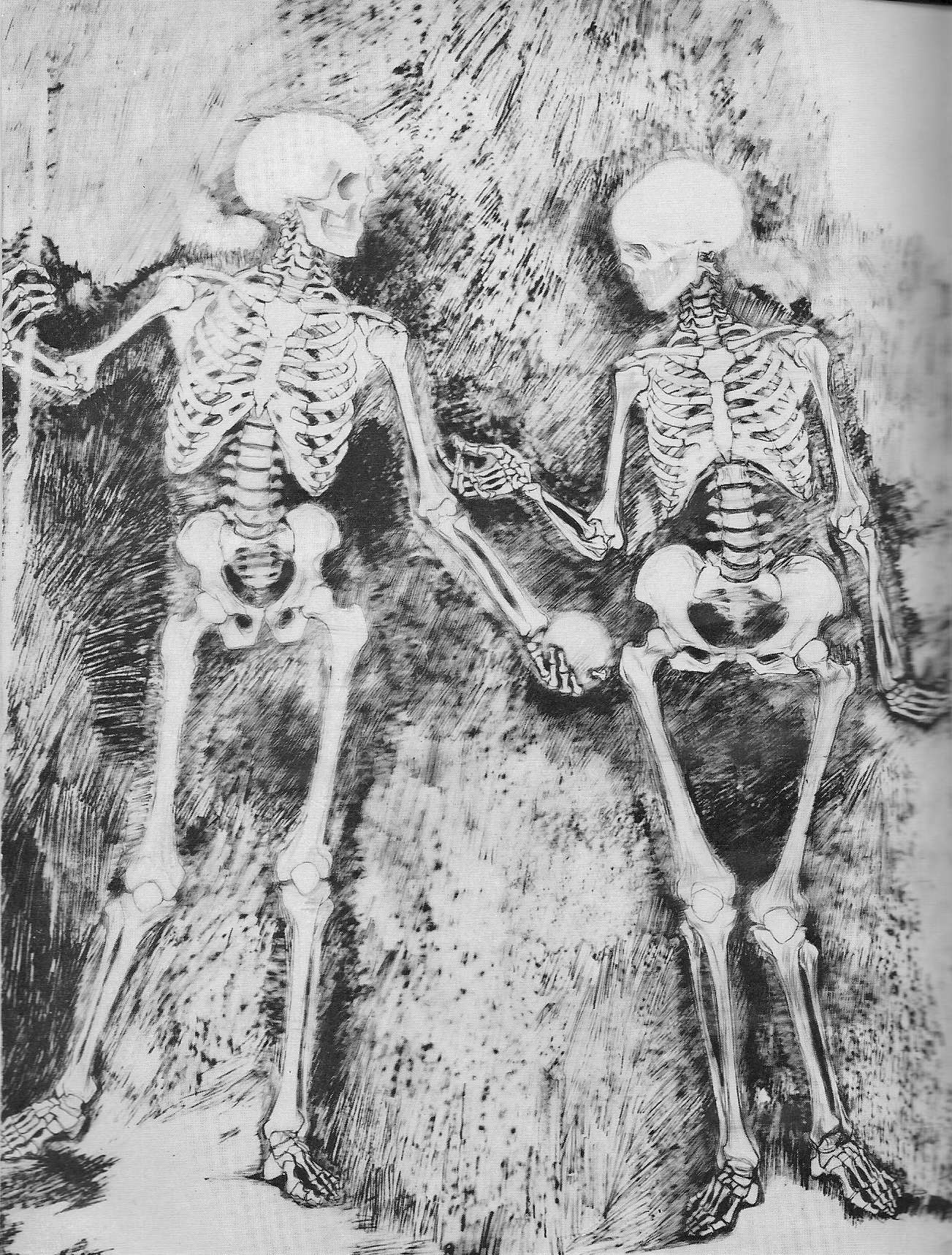MEN, WOMEN & COMPUTERS
Valdemar W.SetzerDept. of Computer Science, University of S�o Paulo, Brazil
http://www.ime.usp.br/~vwsetzer
Original: May 15, 1994; last revision/adition: Sept. 15, 2014 - 1
To examine the question "why do men behave differently than women regarding their use and interest on computers?" one has to begin by observing what are the essential differences between genders. As I am not a psychologist, I am not going to cover the abundant traditional psychological theories about the subject, as for instance the one by Jung which takes into consideration the differences between "animus" and "anima". Rather, I will base myself on my own and my wife's (a medical doctor) observations and common sense. The considerations written below apply to differences in general. They cannot be applied to particular individuals, unless as a basis for further observations.


1. Physical body
There is a beautiful copper print (Kupferstich) by Albrecht
D�rer, dated 1504, "Adam and Eve" (Museum of Fine Arts, Boston) which
shows very well the well-known differences such as height, muscles (Eve
is depicted without apparent thigh and leg muscles; Adam has an athletic
figure showing more power), etc. L.Vogel, in his book Der Dreigliedrige
Mensch ("The trheefolded Man", 2nd ed., Dornach:
Philosophisch-Anthroposophisch Verlag, 1979, plate X) brings a drawing
by G.Sp�th replacing D�rer's figures by skeletons,
exactly in the same posture of the original print (click on the
pictures to enlarge them). Now one can see astonishing
differences in the skull curvature, chest formation and pelvis
proportions.
The articulations in the female figure are looser. The female skeleton
gives the impression of being more round, the other more angular and
rectilinear.
The different physical constitution manifests itself in the different
ways
of walking: men walk in a straight way, women go on moving the hips in
a round fashion. One has the impression that the male figure is
directed
more to its exterior, the female more to the interior. If one makes a
round,
embracing gesture with one's arms, touching the hands, one gets the
typical
woman's gesture of uniting, collecting, rocking (recall the beautiful
1512 Sistine
Madonna by Raphael, Gem�ldegalerie Alte Meister, Dresden; notice the faces of the not yet born surrounfding the madonna).

2. Will, actions
Men tend to be more active and aggressive, living more in the motor sphere, with a higher practical sense in terms of concrete objects. Women tend to be more passive, with a higher inner activity; they are very practical regarding subjective objects (like food, which involves taste).
3. Feelings
Men are typically moved by challenges to their individual limits. Women tend to be more social- and family-oriented. It is typical that the latter know how their children sleep and what they like to eat, something that is in general strange to males. Men tend to dominate more the actions which they take based upon feelings; they maintain more distance to the latter.
4. Thinking
One could summarize the main differences here with two words: men have a tendency to more analytical thinking, women to more synthetic. (While discussing these ideas with my wife, she said: "See? You are already classifying everything!") As with feelings, men's thinking tends to be more objective, abstract, symbolic-formal, maintaining distance. Women's tends to the subjective, integrating and taking part of the thing being thought. Men tend to draw conclusions very fast, women like to stay longer in their observations.
5. Systems
In 1917, in his book Von Seelenr�tsel (GA [Gesammtasugabe, General Edition] 21, 5th ed., Dornach 1983, pp. 150-163), "Riddles of the Soul", Rudolf Steiner expanded the usual systemic classification of neuro-sensory and circulatory-respiratory systems, adding the metabolic-motor system. Well, we could also characterize the gender differences saying that men tend to the neurological, the respiratory and motor parts; women to the other three. In fact, women are in general more aware in their senses, like noticing what some other person is wearing, if there was a beautiful flower in the room, etc. The circulatory is more internal than the respiratory system, which is permanently exchanging with the exterior. The metabolic system, so much connected to the circulatory, is so strong in women that they have the inner forces to internally generate, maintain and feed another being. (An interesting observation is that men are more subjected to circulatory diseases, that is, one could imagine that their correspondent system is not so "strong.") B.Lievegoed, in his book Alte Mysterien und soziale Evolution (Stuttgart 1991), summarizes all these differences saying that men have their forces turned to the outside world, while women have them turned inwardly. Maybe men would not be able to stand the pains of childbirth...
6. Relations to machines
If we use the previous sections to form an image of each gender, one may understand why men are much more connected to machines than women. Men are interested in their mental aspects, that is, why and how they work; women are in general more interested in using them as tools and don't care to "understand" them. (I propose an experiment: ask to any group of people how many men and women know how does an internal combustion motor work - what are the purpose of cylinders, spark plugs, etc...) Men are interested in aggressively exploring the machines' limits; women are in general satisfied if the machines accomplish the necessary tasks, and do not show the curiosity to explore other, more efficient ways of doing the same things. (Once I observed my wife making strawberry jam; I noticed that she would let the fruits boil until the liquid they produce would have almost completely evaporated. I immediately had the idea that if she would extract the liquid - using a sieve to separate the fruits - then she could boil the mix much faster, preserving the nutrients. The extracted liquid is used as a concentrate for juices and to add to yogurt.) And we never had real strawberry jam, just compote... [this sentence was typed by my wife after she read this essay].
7. Computers
These are abstract machines, which continuously simulate a very restricted kind of symbolic-logical, mathematical thinking - algorithmic thinking. So now one may understand why Newsweek said that, according to the National Science Foundation, "Men earning computer-science degrees outnumber women 3 to 1 and the gap is growing." Sure, this means that the general differences I pointed out above have not been perverted yet. Sherry Turkle, from MIT, is cited as having said about computers that they have come to stand for "a world without emotions" - an image that seems to scare off girls more than boys, adds Newsweek. Obviously, formal, symbolic thinking has no emotions, unless for the excitement of debugging, dominating that damn machine that refuses to do what one orders it to do, etc. - typical male characteristics.
I have an old lap-top and a modern notebook. The former with Word4 (it has no hard drive) and the latter with Word for Windows (this was written in 1994). I am tired of telling my wife that she will be able to do many more things, in an easier and faster way if she would use my notebook. She refuses, saying: "But I am so satisfied with my old computer; it does everything I need, why should I use another system? I don't want to learn everything again!" She had tried to use the mouse, but as everybody else, had coordination problems in the beginning. This was enough for her not trying it again for a long time. Newsweek cites R.Anderson, author of "Computers in American Schools", as saying that "Boys and girls are equally interested in computers until about the fifth grade; at that point boys' use rises significantly and girls' use drops". That's an elaborate verification of the obvious: it is at that age that the gender differences pointed above start to develop. Girls develop in general much faster than boys. I conjecture that this difference in interest on computers is a healthy one, and corresponds to "natural" differences from one gender to the other. One would be disrupting this "natural" individual evolution if one would force girls to have more interest, and boys to have less. Well, let me point out here that I am absolutely against the use of computers before high school, in any form whatsoever, but this is another matter and has been the object books and papers (see e.g. Setzer. V.W. Computers in Education . Edinburgh: Floris Books, 1989, the paper "Computers in Education, Why, When and How" and many others linked from my home page).
Newsweek mentions that the first programmer was Lady Ada Lovelace, assistant to Charles Babbage, and makes the following comment which, according to my observations above, could hardly be more stupid: "If [Ada] had become a role model, maybe hundreds of thousands of girls would have spent their teenage years locked in their bedrooms staring at screens." Fortunately, they were wiser and haven't!!! Continuing, Newsweek cites Marcelline Barron, administrator at the Illinois Mathematics and Science Academy, a coed boarding school for gifted (???) students. Barron laments that girls are "doing their nails or worrying about their hair" and says that "We have these kind of expectations for young girls. They must be clean, they must be quiet." Maybe girls are worried about their nails because their parents and school have not given them other, more substantive interests, like artistic training and love to reading (both should evidently also be given to boys). But what disturbs me in her statement is that one thinks girls behave in their typical fashion because of cultural influences. In my opinion, we are here facing a "natural" development, not a cultural one. Obviously, the environment plays an important role, but I have tried to show that deep human characteristics are involved with gender differences in using and having interest in computers. Husbands and wives should not become impatient with their spouses: fortunately, everyone is behaving as s/he should as far as "nature" is concerned.
Now, humans are not pure "natural" beings - that's why I have consistently used quotation marks around that word. This means that an individual may have certain tendencies but may overcome them through his/her own free will. In this sense, I would like to say that maybe a mix of the male and female characteristics would be ideal. Men should not allow their fascination to machines and to abstract, analytical thinking dominate themselves, staying immersed for hours in the artificial, virtual, unreal world of their computers, sometimes doing absolutely idiotic things. I strongly recommend reading the accompanying full-of-humor article by George Hackett in Newsweek. Sample: "My word processor, for example, can not only turn the first letter of every paragraph upside down and make it red, it provides 42 ways of doing it. I have spent many evenings installing macros that do things like print my horoscope on the backs of envelopes. Now there's a valuable feature!" On the other hand, women should make an effort and be curious in understanding technology (only understanding it makes it possible to put it in its right place) and learn novelties which may be useful.
The other accompanying article in Newsweek is by Deborah Tannen. She calls the attention to the fact that women love e-mail (albeit being subjected to horrendous references to sex by males - sure, who is the aggressive one?). Obviously, that's a beautiful social part of computing! An e-mail list joins people with common interests, in a way that was not possible before (recall the embracing feminine gesture). And I think the Ethics-L list has shown for years that it is possible to maintain the level, politeness, respect and good will in e-mail systems. But one should refrain from turning e-mail "too male," in the sense that one would leave aside politeness (not greeting and bidding farewell), would only send telegraphic, super-objective texts, etc.
I propose that participants read Newsweek's interesting articles, and compare their contents with my considerations. As a typically ambitious male, I hope they may shed some light on the subject, turning a few people more aware of the "natural" gender differences, making them more tolerant to the other sex and leading to self-education.
I would appreciate any criticisms and additions that could enrich this essay.
PS1 (Feb. 1998): As far as I know, unfortunately the Ethics-L electronic list has not been functioning for a long time.
PS2 (Sept. 2014): Since the time this essay was written, 20 years ago, with smartphones and tablets the Internet and computers have become accessible at anytime anywhere. About 10% of all Internet users are now addicted to it. The amount of nonsense, and irrelevant materials and exchanged messages surpass enormously the useful utilization of the Internet. Women tend more to social exchanges than men, and men to violent video games, erotism, etc. than women. But in general the use of computers have expanded immensely, independent of the gender. With the use of intuitive graphics, this use has become very easy, but I still have the impression that gender differences continue to play some role, becuase the basic differences expounded in this essay are universally valid. In a home or office with men and women, when someone has a problem using her/his computer, in general to which person s/he asks for help, a woman or a man?

Home